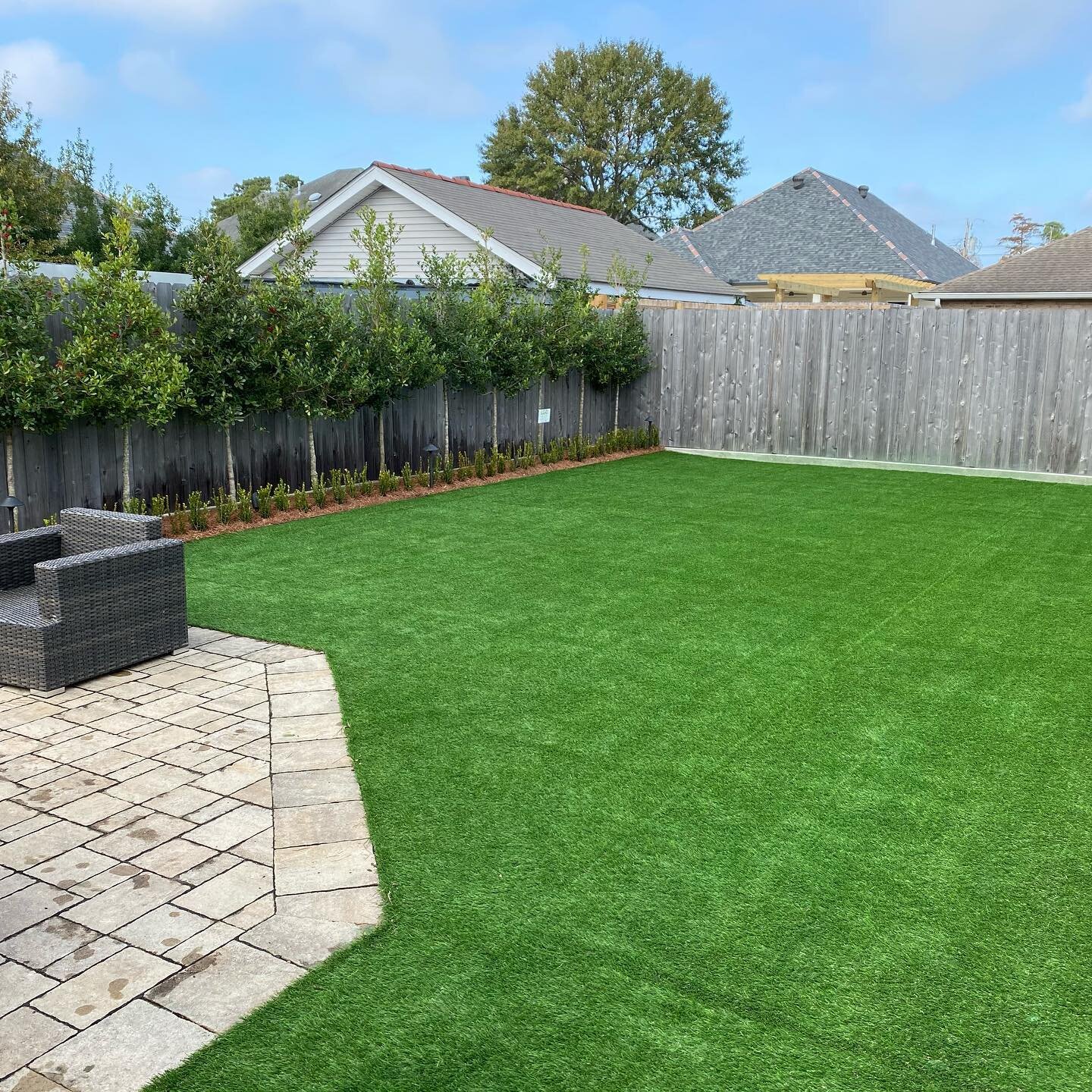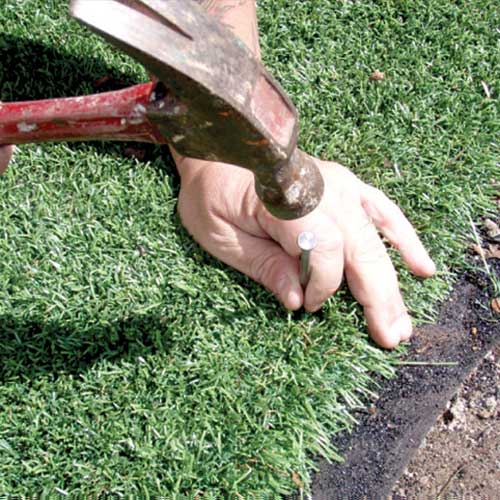Transform Your Yard with Expert Turf Installation Phoenix AZ Services
Transform Your Yard with Expert Turf Installation Phoenix AZ Services
Blog Article
Explore the Environmental Conveniences of Opting for Artificial Lawn Solutions
The adoption of synthetic turf services presents a compelling chance to deal with pushing ecological challenges. By considerably minimizing water usage and lessening the application of harmful chemicals, these options not just promote sustainable landscape design yet additionally protect local communities. Furthermore, the lower carbon impact connected with reduced upkeep activities adds to a more sustainable approach to land monitoring. Nonetheless, the ramifications of these benefits prolong beyond plain preservation efforts, increasing inquiries concerning their long-term effect on habitat conservation and general eco-friendly equilibrium. Exploring these measurements discloses a complicated interaction worth thinking about.
Water Conservation Conveniences
One of the most substantial advantages of fabricated grass is its ability to save water. In contrast, synthetic lawn does not require watering, substantially decreasing the total demand for water resources.
By getting rid of the requirement for regular watering, synthetic grass contributes to lasting landscape practices and aids reduce the ecological influence of excessive water consumption. The preservation of water extends to the reduction of drainage, which can lead to soil disintegration and waterway pollution.
In addition, the setup of synthetic grass enables towns and home owners to designate water sources extra successfully, concentrating on vital uses such as drinking water and agriculture. The shift towards synthetic grass not just advertises accountable water usage yet likewise aligns with more comprehensive environmental objectives aimed at protecting natural sources.
As neighborhoods significantly prioritize sustainability, the water conservation benefits of synthetic grass provide a compelling case for its fostering in industrial and property landscape design projects.
Lowered Chemical Usage
The transition to fabricated grass substantially reduces the dependence on chemical treatments generally used in natural yard upkeep. Traditional lawn management normally includes the application of pesticides, fertilizers, and herbicides to promote development and control pests. These chemicals can present threats to human health, local wild animals, and the atmosphere, adding to dirt and water contamination.
On the other hand, synthetic grass removes the demand for these harmful substances. When set up, it needs marginal upkeep, mostly containing normal cleansing and occasional infill replenishment. This reduction in chemical usage not just benefits the prompt atmosphere but likewise adds to broader eco-friendly security. By lessening the launch of artificial compounds right into the environment, synthetic grass advertises much healthier dirt and water supply.
Additionally, the lack of chemical overflow connected with synthetic grass installments assists shield neighborhood waterways from contamination, supporting water life and preserving biodiversity. Artificial turf companies phoenix. As neighborhoods significantly focus on lasting practices, going with synthetic grass presents a practical remedy that straightens with environmental preservation goals. Via this shift, property proprietors can take pleasure in lush eco-friendly rooms without jeopardizing eco-friendly health and wellness, paving the means for a more sustainable future
Lower Carbon Impact

Furthermore, the installment of synthetic grass can lead to significant water preservation. All-natural grass need substantial quantities of water for irrigation, which not just contributes to the carbon impact associated with water extraction and therapy yet likewise strains regional water resources. On the other hand, synthetic grass requires marginal maintenance, calling for no watering, thereby considerably minimizing water use and its connected power expenses.
Additionally, the longevity of synthetic grass adds to its decreased carbon impact. With a life-span of approximately 15 years or more, the requirement for regular replacements is lessened, resulting in much less waste and lower power intake in manufacturing and taking care of standard grass choices. Overall, synthetic grass offers a sustainable alternative for eco mindful landscape design.
Environment Preservation
Environment conservation is an essential factor to consider in the discussion over landscaping options, especially when contrasting artificial lawn to all-natural turf. Natural lawn lawns often need substantial upkeep, consisting look what i found of making use of pesticides, herbicides, and fertilizers, which can detrimentally influence local ecosystems. These chemicals can leach right into the dirt and rivers, harming native plants and fauna and disrupting local habitats.
Fabricated grass removes the requirement for harmful chemicals, thereby securing neighboring wild animals and preserving the integrity of bordering communities. The installment of artificial grass can lead to the conversion of previous lawn areas right into even more biodiverse landscapes, such as pollinator gardens or indigenous plant areas, which can sustain local wildlife.
Inevitably, the transition to synthetic grass not just conserves water and lowers upkeep initiatives but also cultivates a more harmonious partnership between human activities and the native environment, promoting habitat preservation at the same time.
Long-Term Sustainability
Long-term sustainability is an essential consider reviewing the benefits of man-made turf over typical lawn lawns. One of one of the most substantial advantages of synthetic grass is its sturdiness; it can last as much as 15-20 years with marginal maintenance, whereas natural lawn requires regular reseeding and replacement. This long life reduces the demand for constant resources, such as water, fertilizers, and chemicals, which are essential for maintaining a healthy and balanced turf lawn.
In addition, man-made lawn adds to a reduction in carbon discharges linked with lawn treatment equipment. Standard yards typically require gas-powered mowers, trimmers, and blowers, all of which add to air contamination. Arizona artificial turf. On the other hand, synthetic grass eliminates the requirement for such equipment, promoting a cleaner environment
Moreover, the production of synthetic grass increasingly uses recycled products, improving its sustainability account. As makers take on environment-friendly methods, the environmental impact of man-made turf remains to decrease.

Conclusion
The fostering of synthetic grass remedies provides considerable ecological benefits, including significant water conservation, lowered dependence on harmful chemicals, and a lower carbon impact. Man-made grass aids use this link in protecting all-natural environments by minimizing land disruption and advertising lasting sustainability via the usage of resilient materials. Collectively, these elements underscore the possibility of artificial lawn to add favorably to ecological health and offer a practical alternative to traditional landscaping techniques in an increasingly resource-conscious globe.
In contrast, fabricated grass does not require watering, significantly minimizing the overall need for water resources. By lessening the launch of artificial compounds into the ecological community, synthetic grass promotes healthier dirt and water systems.
Furthermore, the installment of fabricated lawn can result in significant water preservation. In contrast, fabricated lawn needs marginal maintenance, requiring no watering, consequently substantially minimizing water use and its associated power prices.

Report this page